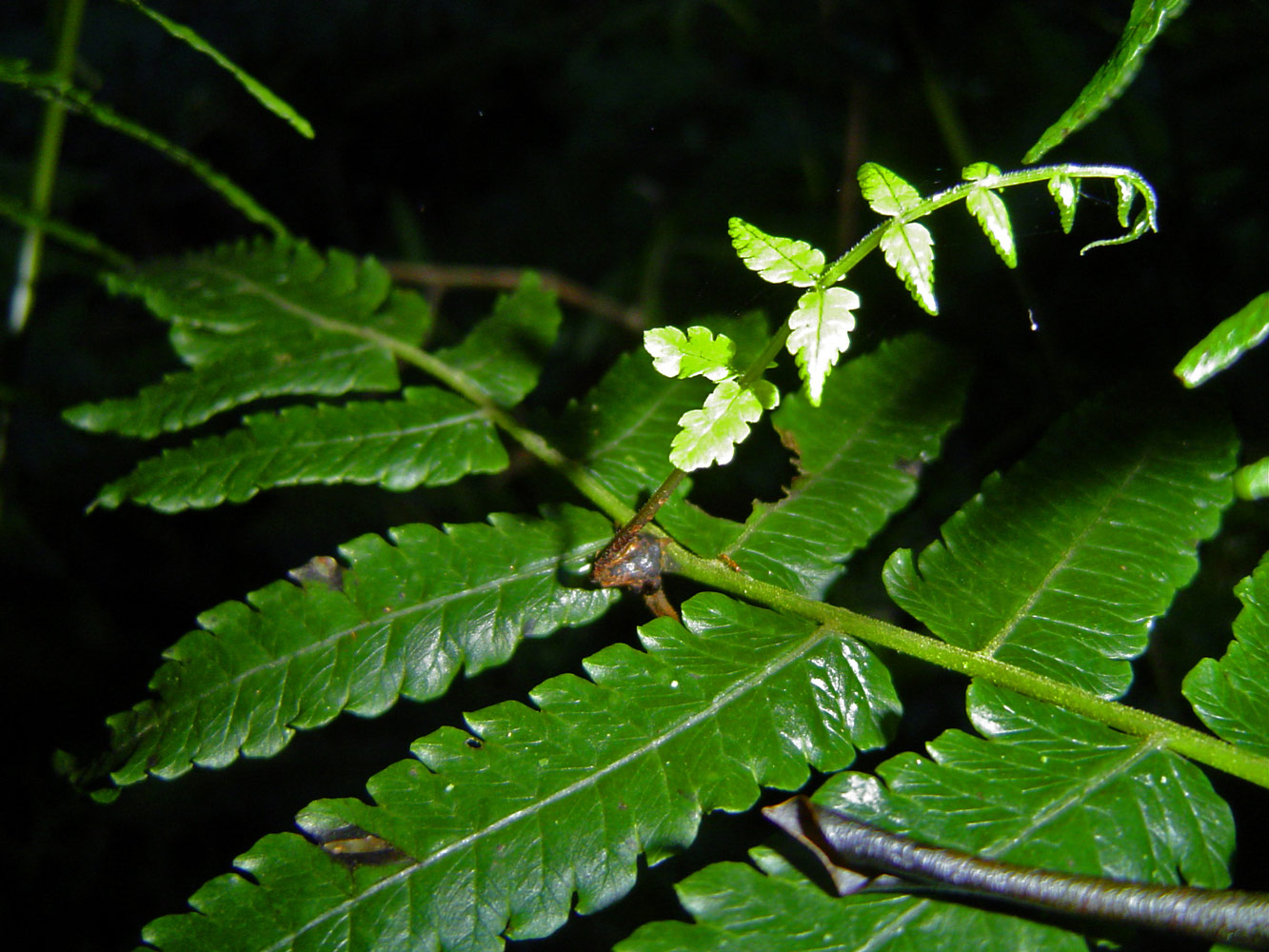About ferns
In the plant kingdom we find a major division of vascular, spore bearing plants, called the Pteridophyta (ferns & fern allies).
In evolutionary terms the Pteridophyta are put in between the Bryophyta (mosses and liverworts) and the Spermatophyta (seed-bearing plants). The Pteridophyta differ from the Bryophyta by the development of a vascular system , they contain elongated cells in the stalks for the transport of water and nutrient solutions. They differ from seed-bearing plants by the absence of flowers and by the production of spores.
Read more about fern classification
1. Rhizome
The stem or rhizome is the part of a fern from which the fronds (leaves) and roots grow. The primary roots (growing directly from the embryo) take care of the initial anchoring and uptake of water & nutrients for the young fern. They are replaced by secondary adventitious roots responsible for anchoring and further uptake of water and nutrients. The secondary roots grow continuously with the stem.
Read more about the vegetative structure
1. Vegetative reproduction
In some ferns the rachis produces a vegetative bud or gemmae, these ferns are called proliferous. When this bud falls on the ground a new plant develops, as in Tectaria gemmifera.
Read more about vegetative reproduction
